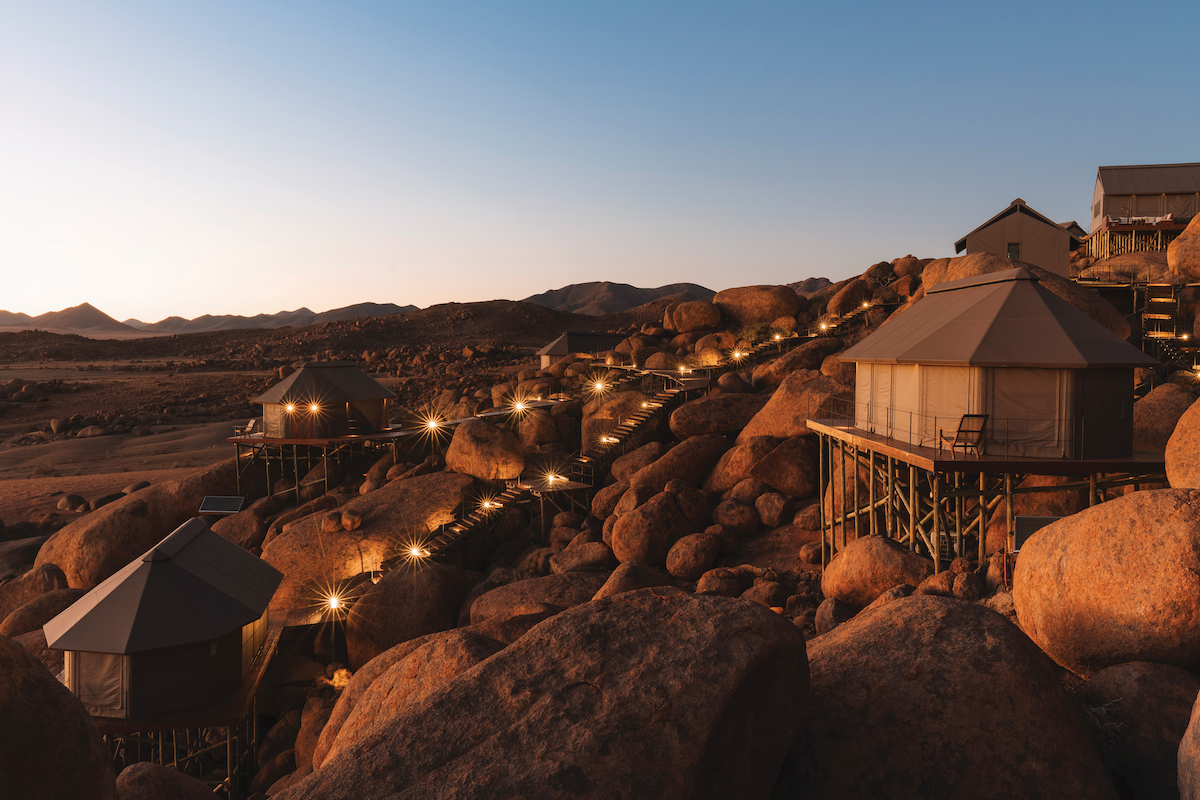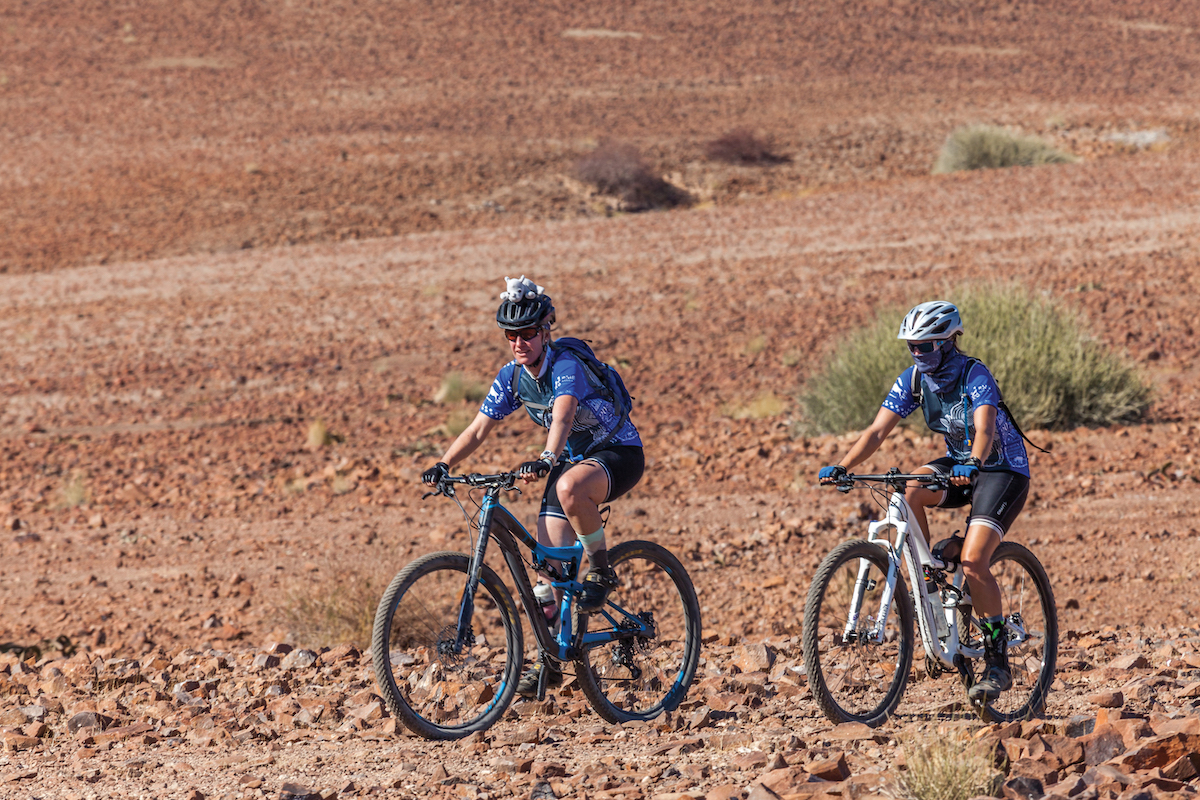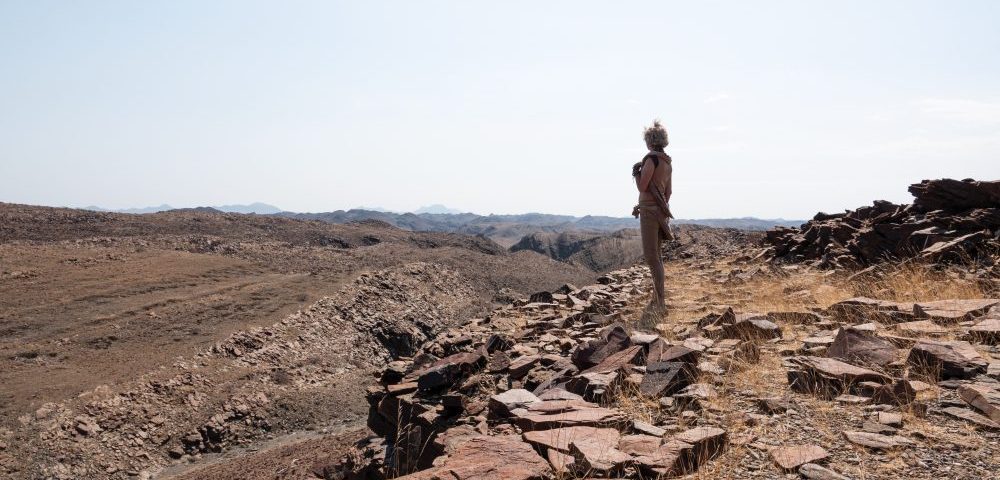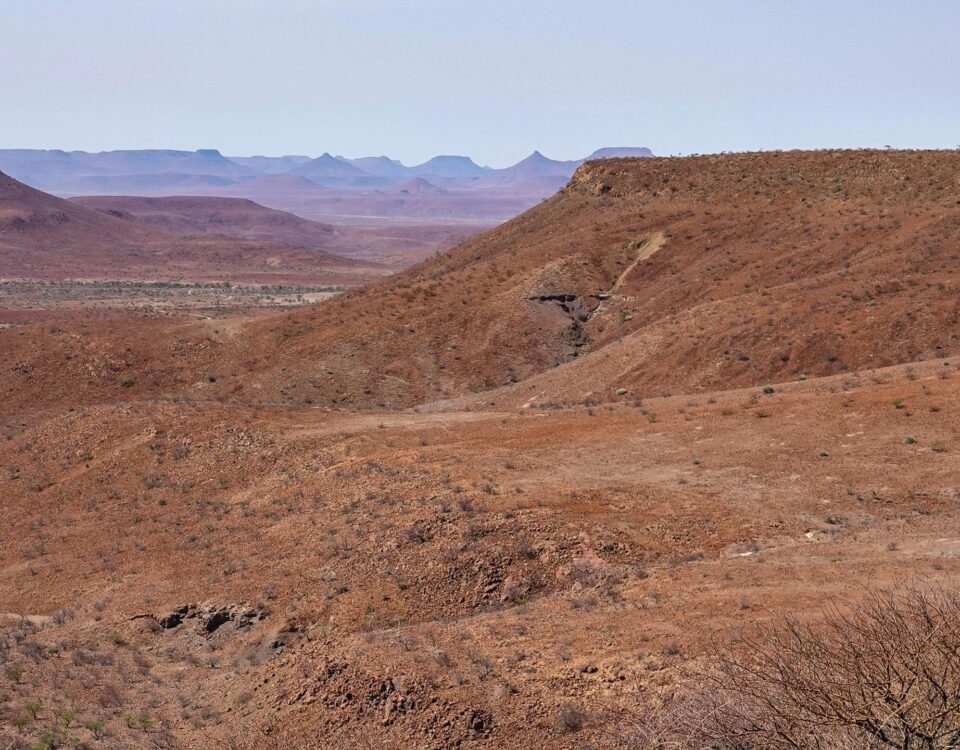
A Victorian Safari: Zannier Hotels Sonop Lodge
August 29, 2019
FIVE YEARS OF RIDE FOR RHINOS
August 30, 2019Kaokoland… The ephemeral rivers in Namibia’s far northwest and the land between them are as fascinating as the different seasons. What you see is determined by the wind and the rain and the time of day. Whether you drive north to south or the other way. Whether you approach the Hoarusib from Sesfontein or Orupembe. Whether you drive to Purros from the north with the afternoon sun behind you or approach from the south with the sun in your face. Soft and golden in winter or with dramatic clouds to the east in summer. The picture you store in your memory will be of two different places. It can be so windy that the Hoanib is hidden in a veil of dust, with only the silhouettes of giraffes outlined in the riverbed. Or so hazy on the plains between the Khumib and the Kabere Mountains that the zebras look like moving rocks.
Text and Photographs Rièth van Schalkwyk
There is something about this part of Namibia that awakens the adventurer in travellers. Something that captures the imagination and does not let go. Perhaps it is driving for a day, often just on a track, with no other vehicle in sight, sometimes passing a remote or even deserted village or a Himba herdsman with a walking stick and his dog. Or is it the sheer beauty of the landscape with its multi-layered horizon, its ancient rock formations cracked and stratified to form dramatic graphic lines and textures? Can it be the surprise at finding water with birds and greenery, baby springbok and gemsbok calves in the desert, in the dry season?
We planned our itinerary to include the layered landscapes of the northwest, a glimpse of the four ephemeral rivers, a full moon, a dark moon, the magic of dark skies with brilliant stars and the Milky Way in all its glittering glory. Sunsets and sunrises over plains, campfires at dusk and nothing but the sound of owls at night and francolins at daybreak.
We like to think that there are few countries in the world where unspoilt nature is as easily accessible as in Namibia. It is often said that Windhoek is a city in the bush. Exit in any direction and look back after thirty minutes of driving: you will not see the city. That is if you don’t choose the highways.
Few departures are as satisfying as heading into the bush in a camper. Especially during the camping season, when there is a crispness in the air and the mountains have that almost opaque sheen as they have in watercolour paintings. The excitement of preparation and packing is addictive and starts weeks before the actual departure date.
My mission with this safari was to show my friends a part of Namibia that is indescribable. No matter how many times I have been back since my first safari more than 30 years ago. It looks different, and the same, every time. And it never made it easier to describe or photograph.
TOP LEFT TO BOTTOM RIGHT
How may floods through how many centuries did this camelthorn withstand? If only it could tell that story.
A moringa next to the road outside Uis.
A hawk perched on a corkwood.
Towering over Himba boys – shows just how enormous these young baobabs are.
So you thought bottle trees all look alike? Not where they have to put up with hungry browsers.
“Once you recognise the “attitude” of a tree stripped to the bare essentials it is easy to identify who they are.”
Another mission that is easier to describe, and one that even does justice to it in print, was to identify as many of the corkwood trees as I possibly could. It was the dry season, which means corkwoods have no leaves and through my eyes look their most dramatic. The lovely otherworldly shape of their branches and bark is irresistible. Altogether 31 species are known to occur in the dry regions of Namibia, and most of them grow along our planned route. With my brand-new updated version of Colleen and Barbara’s Trees and Shrubs of Namibia and a wonderful new camera with a proper fixed-zoom lens I was ready to take on the challenge.
Don’t think that those far northern regions are reached quickly and easily from Windhoek. It takes time. The first 800 kilometres can take a day, depending on the company you keep. Starting off on the tar road heading north past the small towns of Outjo and Kamanjab to Ruacana, not even a flat tyre will break your speed. But the sight of a beautiful chestnut tree with its multi-coloured bark, white against smooth granite rocks on a koppie, will certainly bring the convoy to a halt for a photo. The road between Kamanjab and Ruacana is straight and rather boring, but it is a feast for tree-lovers: leadwood, apple leaf, mopane, terminalias, chestnut trees and several different corkwoods. This is a perfect introduction to tree-ing. At least the trees don’t fly away before you can identify them. But then again, as the kilometres pass by, you realise that even though these gnarled old trees have stood there for hundreds of years, it is still difficult to identify them at speed, especially for a novice.
The real adventure starts where the tar road ends at the Ruacana hydro-electric power plant. The exciting sound of tyres on gravel and the smell of dust. We will have this pleasure for two weeks until we hit the tar again in Outjo.
After a recent road upgrade, those behind the steering wheel can now catch a glimpse of the Kunene every now and then as we head west along the river. It is exciting to see flowing water in this desert country. One gets this treat only on the northern and southern borders. The highlight at sunset is to be in a boat on the river when the full moon rises. Make sure to drive along the river with the sun at your back, west in the morning and east in the afternoon.
Tree-watching just gets better. Gold-stemmed, chalk-white or peeling paper-thin bark of corkwoods, baobabs, moringas and maeruas growing along the river on the dry side of the gravel road that follows the contours of the Kunene close to the river. Then, higher up and over foothills, it continues through dry tributaries, all the way to the Epupa Falls.
It is really beautiful to watch the spectacle of cascading water from up on the hill or close to the falls at the golden hour when the sun lights up the trunks of baobabs perched precariously on the rocks.
Turn your back on the river, albeit reluctantly, and head south again, with the Zebra Mountains to the east and the Baynes Mountains west, passing more baobabs and driving slowly through the village of Okangwati to Opuwo. Remember that it is the last place to fill up with petrol and stock up on essentials.
From Opuwo the route leads north again, crossing plains, up and down mountain passes, through mopane forests, past deserted fields, small villages and settlements with kraals made with dried branches, green fields, springs and makalani palm trees. Lunch under a leadwood tree in a sandy riverbed may attract a surprise visit from Himba women and kids.
ACCOMMODATION IN KAOKOLAND AND SURROUNDS
There are several places to camp or lodge close to the falls. Depending on the water level the noise of the falls can be quite intense at Epupa Lodge and Campsite which is closest to the falls and an easy walk there. The Gondwana Collection recently took over the Omarunga-Epupa Falls Lodge and Campsite. The luxury Epupa Tented Lodge has a rafting centre which is worth adding a day to your itinerary. The Kapita Waterfall Lodge is perched high on the hill to the east of the falls. Take note that the campsite on the lookout point facing the falls is not registered and no legal fee should be paid for taking photographs from there.
PUROS
It is a special treat to camp under enormous old camelthorn trees at the community campsite on the bank of the Hoarusib. The elephants are used to people, but it is advisable to take notices like the one on the tree seriously. Stay in your vehicle or get into your vehicle when they wander closer and, as the one on the photograph did, pull out the water pipe from the sink.
Okahirongo Elephant Lodge blends so well with the landscape and is so unobtrusive that you will be forgiven to assume it is part of the village. The exquisite stone wall at the entrance is a work of art and the selection of African art inside the lodge is beautiful and interesting.
ORUPEMBE
The Marble Campsite has everything you need if you are geared to camp in the middle of nowhere. Water, a shower, shade under mopane trees and a view. An even better view is had from the House on the Hill, which is real luxury with three self-catering chalets. If you have been the unlucky one who missed all the Lonemen up to this point, your luck is about to change – there is one waiting for you under a bottle tree.
In the same area, Etambura Tented Camp provides five canvas and thatch en-suite tents, each with its own deck and a truly stunning view. There is an airstrip in the area, but it is not the kind of place where you would just show up unexpectedly.
KUNENE RIVER LODGE AND CAMPSITE
To hear the famous Cinderella Waxbill scurrying in the undergrowth causes great excitement and a scurrying of a different kind. Kunene River Lodge was always the place to find these endemic birds before they moved away for some unknown reason. For years they became the elusive must-see bird – that few visitors saw there, except on many faded photographs in the bar. In 2019 they were spotted close to the Ruacana Falls and, to our delight, back at their old roosting place on the riverbank. Few camping sites in Namibia offer the luxury of green lawns, solid shade and a view across water. That special treat is reserved for camping along the rivers on the northern borders.
ALL THE WAY UP NORTH
No camping is allowed in the Hartmann’s Valley. You may drive in and around it and then out again. The landscape is pristine and delicate and has been entrusted to those who can ensure that the communities whose land it is benefit financially, and they also see to it that the fragile environment is looked after. Most of the guests at Serra Cafema Camp (Wilderness Safaris) and at Schoemans Camp (Skeleton Coast Safaris) arrive on fly-in safaris. On the river, if you drive down the course of the Marienfluss, there are Camp Syncro for camping and the Okahirongo River Camp for luxury lodging.
SESFONTEIN
The name of this village means six fountains, and indeed there are six of them. Ask a local to point them out to you. When you manage to find your way through the myriad of jeeptracks out of the Hoanib River, stay at the Sesfontein Fort, one of the oldest and quite charming facilities in the far northwest. In the blazing summer heat it really is cool inside and the beer is ice-cold. Sesfontein is also the only reliable source of fuel. Just outside the village, on the route south, turn off at the stylishly designed new billboard to the Ongongo campsite at the spring with the same name. The site was recently redeveloped and makes the most of the rather small riverine area between the carved out banks, providing easy access to the spring and a wooden deck to while away a day of rest. Make sure to buy a trinket from the Himba children selling their mother’s fare at roadside stalls.
Breakdown, flat tyre, photo stops and more photo stops. The sun is low and the campsite still a mountain pass and a gravel plain away. One can plan the itinerary, but never quite the time it takes to get there. But, as our Venture motto proclaims – the journey is the destination.
When you reach Rooi Drom remember that the best is yet to come: The pristine landscape of the Marienfluss, from where you can reach the Kunene River and actually camp on the riverbank, or down the Hartmann’s Valley where camping close to the river is not possible.
From this point heading north, past any one of the three drums – red, green or blue – the landscape is difficult to describe without sounding like a poet who just doesn’t quite get the words right. Even the best camera equipment cannot capture the mood. It is almost a relief to spot a Loneman, because at least then you can focus and shoot and breathe out. Or a white-stemmed row of shepherd’s trees because you know how to frame the scene and not be disappointed later with what you have captured on camera. Feast the eye and feed the soul knowing that it is a privilege to have experienced that magical pristine landscape that will never be more true than the imprint it makes on your conscious mind.
Turning south heralds the last stage of the adventure. Characterised by the dry rivers of Kaokoland, with exotic names like Khumib, Hoarusib, Tsuxub, Hoanib, Hunkab, Obob, Uniab, Achab, Khoigab, Huab and then, finally, the Ugab.
It is a privilege to drive down a dry riverbed where the absence of visible water does not seem to bother the gemsbok, ostrich, giraffe or elephant moving up and down the river courses, feasting on the leaves and pods of trees and shrubs, seemingly unperturbed by vehicles. It is hard to imagine how deep the roots of the age-old Ana trees must reach to find enough moisture to produce these nutritious pods.
The most fascinating quality of all these rivers, apart from the trees that have survived against all odds and the animals, of course, is what you see on the riverbanks. The geological features surrounding each river look different, yet all of them date back to the same geological period millions of years ago. Smooth soft sand, blown against a rocky outcrop, leaving only a crown of black basalt on top. Different layers of rock pushed horizontally to create a dramatic, graphic display.
The days slip away too fast and before you know it, the rising sun sets the Brandberg on fire after one last night under the stars. With heavy hearts we start out on the long road back to reality on a wide white gravel road. As we leave Uis, an enormous chestnut tree waves us a final farewell. Like a slideshow the images flash through my mind and all I wish for is that our photographs will be a reminder of the indescribable beauty even though they will never match the reality or capture the atmosphere.
This article was first published in the Spring 2019 issue of Travel News Namibia.


